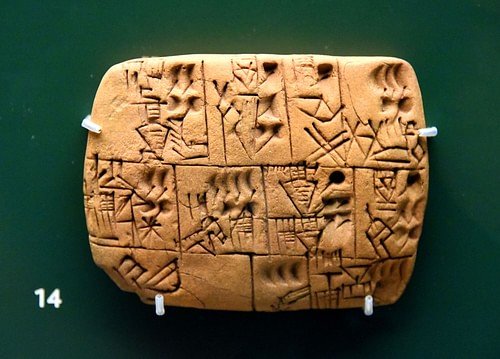The Dawn of Inscription: How Cuneiform Transformed Civilization
The invention of writing stands as one of humanity’s most transformative intellectual achievements, and at its genesis lies cuneiform. Emerging from the fertile crescent of Mesopotamia around 3500-3200 BCE, this “wedge-shaped” script, developed by the Sumerians, was more than a mere communication tool; it was the foundational technology that enabled the management of complex societies, the codification of law, and the birth of literature. [1][2] Cuneiform’s evolution from a simple accounting method to a sophisticated literary medium illustrates a pivotal leap in human cognition, creating a permanent record of thought and governance that would shape empires and fundamentally alter our understanding of history. [1] Its impact was so profound that its decipherment in the 19th century unlocked millennia of human experience, revealing entire civilizations and narratives that had been lost to time. [1][3]
The origins of cuneiform are rooted not in poetry or royal decrees, but in the pragmatic necessities of commerce and administration. [4][5] For millennia, predating writing, ancient Near Eastern peoples used a system of small clay tokens of various geometric shapes to count and track goods like grain and livestock. [5][6] Each shape represented a specific commodity. [5] As urban centers like Uruk grew in complexity, this token system became insufficient. [2] The breakthrough occurred when administrators began storing these tokens in hollow clay balls, or bullae, and impressing the tokens on the envelope’s surface to show the contents without having to break it open. [5][7] This innovation marked the first signs of writing, a direct transition from three-dimensional objects to their two-dimensional representations. [5][8] Scribes soon realized the tokens themselves were redundant; a solid clay tablet with impressed signs could convey the same information more efficiently. [7] Initially, these signs were pictographic—a drawing of a barley stalk for “barley”—but they quickly became stylized, made with the wedge-shaped tip of a reed stylus, giving the script its name from the Latin cuneus, meaning “wedge.” [4][9]
The most crucial evolutionary leap for cuneiform was its development from a logographic system (one sign, one word) to a logo-syllabic one that also represented phonetic sounds. [4][10] This transition, which began around 2800 BCE, allowed for the expression of abstract concepts, personal names, and the nuances of spoken language. [4][10] Writers were no longer limited to recording concrete objects but could now articulate ideas, tell stories, and document history. [4] This phonetic development reduced the script’s inventory from approximately 1,500 pictographs to a more manageable 600 signs, making it more versatile. [10] This newfound sophistication enabled cuneiform to be adapted for writing around 15 different languages across the ancient Near East, including Akkadian, Babylonian, Hittite, and Old Persian, making it the international script of diplomacy and scholarship for over three millennia. [10][11] The ability to convey complex emotional states is evident in the work of the poet and priestess Enheduanna (c. 2285-2250 BCE), whose hymns to the goddess Inanna express adoration, fear, and longing, demonstrating the script’s capacity for profound literary expression. [1]
The societal impact of cuneiform was immediate and far-reaching, providing the scaffolding for the world’s first empires. In law, it allowed for the unprecedented codification and public display of legal principles. The most exemplary instance is the Code of Hammurabi (c. 1755–1750 BC), a collection of 282 laws inscribed on a basalt stele. [12][13] By setting standards for commercial interactions, family law, and criminal justice, Hammurabi proclaimed his desire “to prevent the strong from oppressing the weak,” establishing a principle of recorded, state-sanctioned justice that influenced legal systems for centuries. [12][14] Beyond law, cuneiform gave birth to literature. The Epic of Gilgamesh, the world’s oldest known epic poem, explores timeless human themes of friendship, mortality, and the search for meaning. [15][16] This and other literary works, along with vast administrative archives and scientific texts, were preserved in great libraries, such as that of the Assyrian king Ashurbanipal in Nineveh, which held over 30,000 tablets. [11] These records have provided modern scholars with an unparalleled window into the economic, political, and intellectual life of Mesopotamia. [11][17]
The knowledge of cuneiform faded after its last known use in 75 AD, and for nearly two millennia, the voices of Mesopotamia fell silent. [10][11] The script’s decipherment in the 19th century was a monumental intellectual feat, akin to cracking a complex code without a key. The breakthrough came with the study of the Behistun Inscription, a massive rock carving in modern Iran commissioned by the Achaemenid king Darius the Great. [18][19] This inscription presented the same text in three cuneiform scripts: Old Persian, Elamite, and Babylonian. [10][18] A British army officer, Sir Henry Rawlinson, risked his life scaling the cliffs to transcribe the Old Persian text between 1835 and 1844. [18][20] Because Old Persian was a simpler, semi-alphabetic script, scholars like Rawlinson, Edward Hincks, and Jules Oppert were able to decipher it first. [10][21] This success provided the “Rosetta Stone” needed to unlock the far more complex Babylonian and Akkadian scripts, a process officially confirmed in 1857. [11][21] This decipherment revolutionized our understanding of the past, pushing back the dawn of recorded history and revealing the profound cultural contributions of civilizations like Sumer, previously known only through secondhand accounts. [1]



